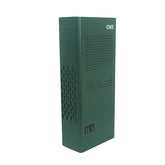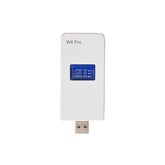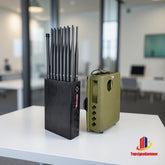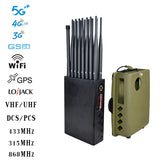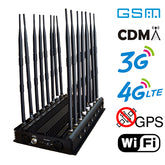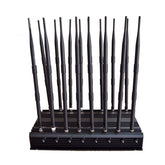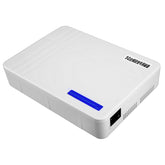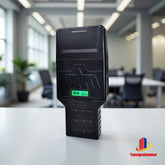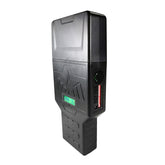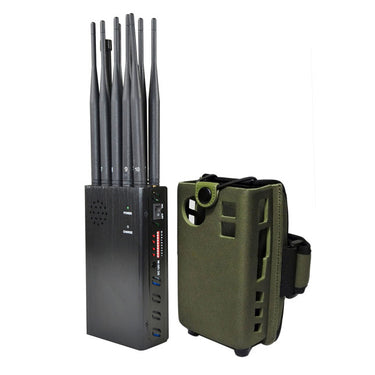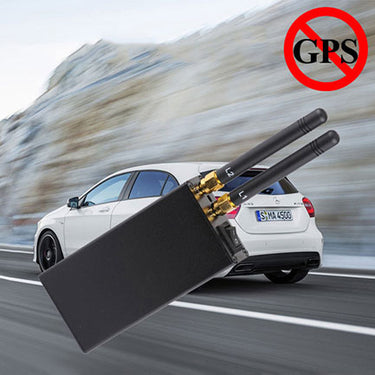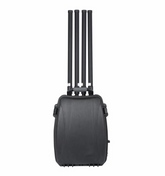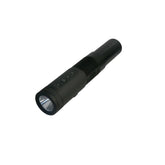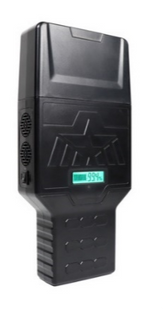Drone Jammers
Drones are becoming more and more popular. Exactly this is a thorn in the side of many people who are concerned about their privacy. After all, no one wants to be photographed or filmed in their private garden from the air without being asked. Therefore, the question not only arises as to whether flying over private property is permitted at all. Because even in the case of a ban, there are of course always people who do not comply with it. In this case, property owners often resort to solid drone defenses to protect themselves from precisely this scenario. There are, for example, special drone jammers. We will now tell you how exactly these drones interfere and whether this is of any use at all with the drone defense.
What Is A Drone Signal Jammer?
UAV jammer are devices that operate at the same frequency as quadcopters and jam data transmission. But the matter is not limited only to this, they can completely turn off the control of the flying device, after which it either lands on the ground or is carried away by the wind in an unknown direction.
Of course, a drone jammer is not a pair of pajamas that you put on your before you put it to bed .It's also not as vicious as the name sounds, it won't freeze your props mid-flight and drop your drone to the ground (legally, of course).
A uav jammers, or signal jammer, is, simply put, a machine that emits electromagnetic noise at radio frequencies with the purpose of superimposing the same radio and GPS signals that your drone uses to operate. The frequency of a drone jammer is generally fixed at 2.4Ghz or 5.8Ghz, which are public frequencies not allocated to manned aircraft, public broadcasting broadcasts, or cellphone signals.
They often look a lot like guns and work by projecting the jamming signal in the shape of a cone of about 15-30 degrees. When a drone is hit with the jammer's jamming signal, the most common reaction is for the drone to return to its starting point (unless the GPS is also jammed), giving the signal jammer a chance to track the drone back to the pilot . In other cases, a uav jammer may cause the drone to land in place or crash the drone to conduct a forensic investigation.
The high performance drone jammers available on the market can operate from a distance of up to several kilometers and become more and more effective the farther away the pilot's remote controller is from the drone. This technology is an asset to both pilots and control authorities as it poses far less risk than other anti-drone measures and allows the pilot's drone to remain unharmed in most situations.
How to use a drone jammers?
The drone jammer operates in the 2.4 GHz and 5.8 GHz bands at a distance of 200 to 1000 meters, depending on the terrain, the power of the device itself and the distance to the operator. The most common is the 2.4 GHz WI-FI frequency, but this channel is becoming more congested, so various interference began to appear. The latest technologies currently being developed allow access to the 5.8 GHz frequency. On this range, the channel is much wider and more efficient. A huge number of unauthorized devices transmit their information on this very frequency.
Activate the drone jammer, you just need to turn it on, having previously connected it to the power source. It can turn out to be both a connect DC power and a car battery, because the mufflers have connectors for connecting to the cigarette lighter. Numerous tests have shown instantaneous disconnection of control and transmission of a signal from the UAV. Jamming devices are easy to use, as they have flexible configuration and an intuitive interface, do not require a dedicated server and integrate with many modern security systems.
But it is important to take into account that in the stop drone mode, absolutely all drones that have come under the range of the device are drowned out. Therefore, other equipment may also be interfered with in the process of trying to stop an intruding drone.
Disrupt UAV with a drone jammer
The drone jammers are not entirely uncontroversial either. You should know that. However, there are still drone frequency jammer that state that the drones are not destroyed, but only disturbed. The principle of these UAV jammer is simple. How exactly can you jam drones? In a drone signal jammer, radio waves are fired so that the drones are forced to land by the Defender.
The defense against UAV has thus been successful. Most anti drone signal jammer can be used not only against quadrocopters, but also against hexacopters and other types of drones. Because it is not the construction of the drone that counts, but the principle of frequency interference. However, you should know that drones are currently still very expensive. Therefore, these defensive measures against drones are more interesting for companies and for certain authorities, but not for purely private use.
In most cases, you should simply call the police and move out of the drone's field of view as soon as you spot it. Also, look around you to find out who owns the drone. Because at the moment it is still the case that drones owned by private individuals do not have a very large range. This makes it relatively easy for you to find out who owns the drone and who took unauthorized pictures of you.

War in Ukraine: NATO sends hundreds of drone jammers to Ukraine
NATO will support Ukraine in its defense against Russia with anti-drone equipment. Hundreds of so-called signal jammers would be delivered shortly, said NATO Secretary General Jens Stoltenberg on Thursday after a meeting of defense ministers in Brussels. These could help render Russian and Iran-made drones ineffective. Jammers are electromagnetic signal jammers. They usually emit a signal that interferes with or blocks the radio link between the drone and its controller.
According to information from Kyiv, the Russian army attacked targets near the Ukrainian capital with kamikaze drones for the first time last week. According to the air force, a total of twelve Iranian drones flew from the south towards targets. According to Ukrainian information, drones were also used in the massive Russian attacks this week.

Drone Signal Jammer FAQ:
What frequency band do drone jammers interfere with?
Can the directional antenna of the UAV jammer target the UAV (pinpoint interference)?
Common Search Terms
Cell Phone Scrambler | WiFi Blocker | GPS Jamming Device | UAV killer
- 10
- 15
- 20
- 25
- 30
- 50
- Featured
- Best selling
- Alphabetically, A-Z
- Alphabetically, Z-A
- Price, low to high
- Price, high to low
- Date, old to new
- Date, new to old
Sort by:
- Featured
- Best selling
- Alphabetically, A-Z
- Alphabetically, Z-A
- Price, low to high
- Price, high to low
- Date, old to new
- Date, new to old
-
The D-US-05A UAV signal blocker features a military-style backpack design for portability. It offers the choice between 3-5dBi omnidirectional or flat directional high-gain antennas, providing 800-1000 meters of coverage or extended-range interference. With stable support feet and a top handle, the device allows for...
- $2,999.99
$3,499.99- $2,999.99
- Unit price
- / per
-
By using this drone blocking devices, drones can either be repelled from secure areas or forced to land. This capability is crucial for maintaining privacy and security, ensuring that no unauthorized recordings or surveillance occurs over sensitive or private areas. Built with a strong...
- $1,299.99
$1,999.99- $1,299.99
- Unit price
- / per
-
Product Information Model: P3-D Color: Black Basic Specifications Jam Signal Type: P3-D: Drone/UAV RC2.4G+RC5.8G+GPSL1/GLONASS Output Power:Total 20W,5-10W each band Jam Radius:200-500meters Power Supply:AC110-240V to DC24V Cooling System:High efficiency aluminum alloy radiator, Build-in 3x cooling fan Working Time:Built-in battery:24V/3000mAh Continue working: around 2 hours Product Size:280x130x46 mm (with...
- $900.00
$999.99- $900.00
- Unit price
- / per



